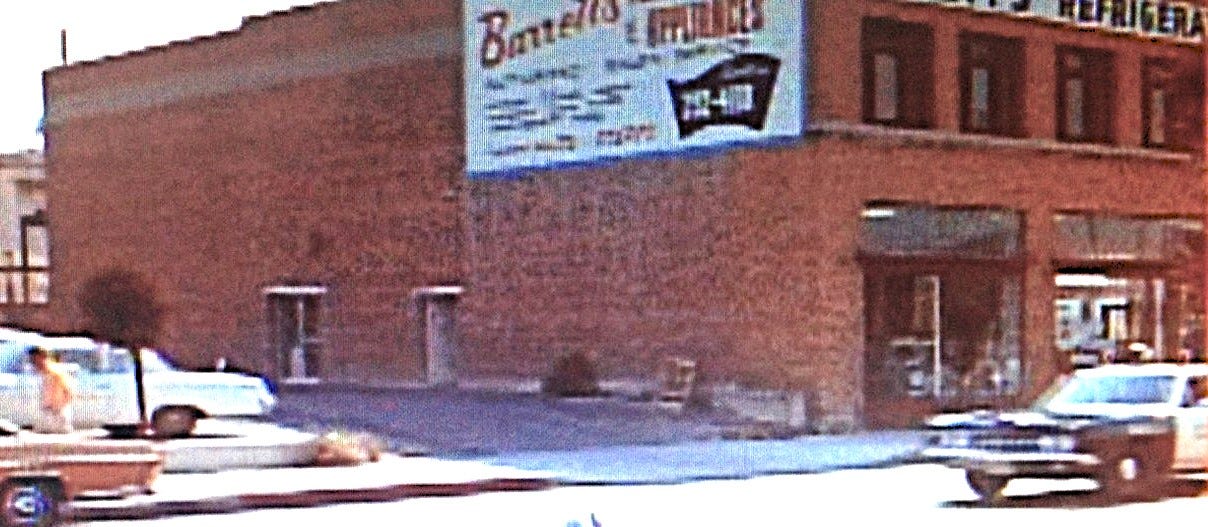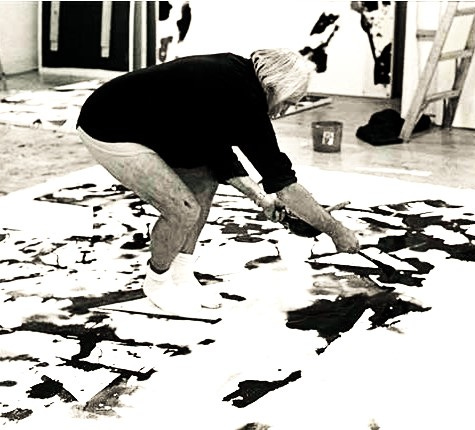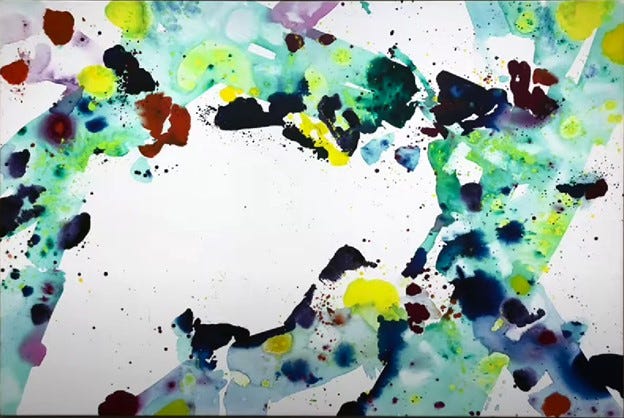Artist Sam Francis has a studio in the 1924 Fuller Paint Company building at Main and Ashland.
In the mid-1960s, Barrett’s Appliances occupies the ground floor. A sailmaker has the second-floor space at the front of the building. The artist Sam Francis (1923 -1994)1 has a studio on second-floor in the back.
Francis has a compound with a house and large studio on 345 West Channel Road in Santa Monica Canyon. It is open house with assistants, wives, children, and visitors constantly dropping by. Ashland studio is his other studio – quiet, away from the chaos of his home.
Francis is planning to move out (Japan) in 1966, and offers his studio to newly arrived San Francisco Bay area (Berkeley) artist and UCLA professor Richard Diebenkorn (1922 - 1993).2 In 1967, the sailmaker moves out, and Sam Francis decides to return and occupies the large front second-floor space.
At the Ashland studio, Francis paints his Edge Series paintings. In 1968, Francis receives a commission to paint Red Berlin - which will be the largest (24 ft x 36 ft) single canvas in the world. At night Francis lends his studio to experimental filmmakers Single Winged Turquoise Bird.
In 1976, Sam Francis returns - again occupying the front space of the Ashland & Main building from 1977 to 1978.
This year is the centenary of the birth of abstract painter and printmaker Sam Francis (1923 -1994). Francis’ lifetime Santa Monica area residency is interspersed with years abroad in France and Japan. Francis uses the proceeds from his successful painting career to fund his own Santa Monica-based print shop, The Litho Studio, printing his works, and creating a community of experimental printers.
Painters of the same generation, both trained in the San Francisco Bay area, Francis (in front) and Diebenkorn (in back) overlap in the Ashland building for 5 years - but rarely interact. Although friendly and undoubtedly acutely aware of each others work, Diebenkorn and Francis are never close.









